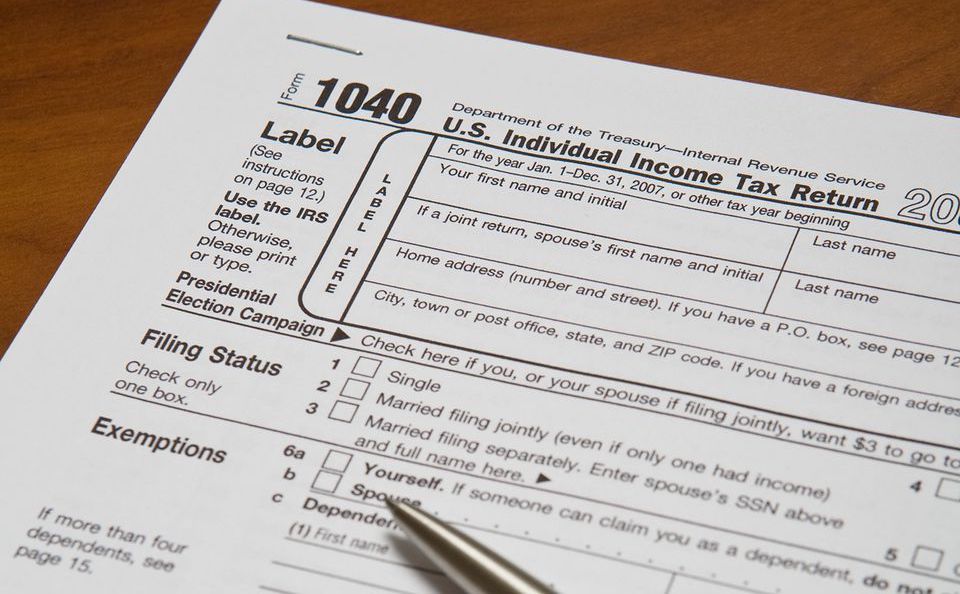IRS kicks off 2020 tax filing season with returns due April 15; help available on IRS.gov for fastest service

WASHINGTON ― The Internal Revenue Service successfully opened the 2020 tax filing season today as the agency begins accepting and processing federal tax returns for tax year 2019.
The deadline to file a 2019 tax return and pay any tax owed is Wednesday, April 15, 2020. More than 150 million individual tax returns for the 2019 tax year are expected to be filed, with the vast majority of those coming before the April 15 tax deadline.
While the IRS’ Free File program as well as many tax software companies and tax professionals began accepting tax returns earlier this month, processing of those tax returns begins as IRS systems open today.
The IRS expects about 90 percent of individuals to file their returns electronically. Filing electronically and choosing direct deposit remains the fastest and safest way to file an accurate income tax return and receive a refund.
“The IRS reminds taxpayers there are many options to get help,” Rettig said. “Our website has around the clock information available and is the fastest way to get assistance. We’ve made improvements to the Free File program and filing electronically with direct deposit remains the best way to speed refunds and minimize errors. As always, experts in the nation’s tax professional community stand ready to help people navigate their tax issues. And we also remind people our IRS-trained community volunteers are ready to help file tax returns in locations across the country.”
Revised 2019 Form 1040 includes virtual currency questions
Using feedback from taxpayers and the tax professional community, IRS revised the Form 1040, U.S. Individual Income Tax Return, for tax year 2019. Taxpayers will use fewer schedules to supplement the base Form 1040 as six schedules were consolidated into three numbered schedules.
In 2019, taxpayers who engaged in a transaction involving virtual currency will need to file Schedule 1, Additional Income and Adjustments To Income. The Internal Revenue Code and regulations require taxpayers to maintain records that support the information provided on tax returns. Taxpayers should maintain, for example, records documenting receipts, sales, exchanges or other dispositions of virtual currency and the fair market value of the virtual currency.
“Virtual currency is an important addition to the 1040 this year,” Rettig said. “This emerging area is a priority for the IRS, and we want to help taxpayers understand their obligations involving virtual currency. We will also take steps to ensure fair enforcement of the tax laws for those who don’t follow the rules involving virtual currency.”
New Form 1040-SR alternative for seniors available
While all taxpayers file Form 1040, taxpayers born before Jan. 2, 1955, have an additional option to use new Form 1040-SR, U.S. Tax Return for Seniors. Taxpayers age 65 or older will have the option to use this new form – either filing electronically or mailing a paper return − when they file their 2019 federal income tax return in 2020. Form 1040-SR generally mirrors Form 1040.
Form 1040-SR allows income reporting from certain other sources such as investment income, Social Security, and distributions from qualified retirement plans, annuities or similar deferred-payment arrangements to eligible taxpayers over age 65. Taxpayers 65 and older have the option to file Form 1040-SR whether they are working, not working or retired.
The Form 1040-SR includes a standard deduction chart listing the standard deduction amounts, including the extra standard deduction amount that taxpayers 65 and older qualify for. Eligible taxpayers 65 and older who plan to itemize deductions − instead of taking the standard deduction − will be able to file Form 1040-SR along with Schedule A, Itemized Deductions, when they file their 2019 tax return.
The Form 1040 Instructions cover both Form 1040 and Form 1040-SR. Both forms use the same “building block” approach introduced last year that can be supplemented with additional schedules as needed. Taxpayers with straightforward tax situations will only need to file the Form 1040 or Form 1040-SR with no additional schedules.
Since nearly 90% of taxpayers now use tax software, the IRS expects the change to Form 1040 and the introduction of the Form 1040-SR and its schedules to be seamless for those who file electronically including those who are eligible to use IRS Free File, the Volunteer Income Tax Assistance (VITA) program or the Tax Counseling for the Elderly (TCE) program.
Free help preparing and filing taxes electronically
The IRS strongly encourages people to file their tax returns electronically and choose direct deposit for faster refunds. Filing electronically reduces tax return errors as the tax software does the calculations, flags common errors and prompts taxpayers for missing information.
The IRS supports free online and in-person tax preparation options for qualifying taxpayers through IRS Free File online or free tax help from trained volunteers at community sites around the country.
Taxpayers with incomes that were $69,000 or less last year – and that’s most taxpayers – can use IRS Free File now through Oct. 15. Free File is a public-private partnership between the Internal Revenue Service and Free File Inc. (FFI), a consortium of tax software providers who make their Free File products available at IRS.gov/FreeFile.
Taxpayers can use a “look up” tool to choose from one of 10 featured online products. Each of the 10 providers sets its own eligibility standards, generally based on income, age and state residency giving taxpayers who earned $69,000 or less at least one product to use for free. There are also products in Spanish. For taxpayers who earned more, there is Free File Fillable Forms, the electronic version of IRS paper forms.
Free File is just one way the IRS provides free tax preparation options to taxpayers through a partnership model. Taxpayers wanting more personal help can visit one of thousands of community volunteer sites through the Volunteer Income Tax Assistance program or Tax Counseling for the Elderly offered by AARP. The IRS partners with community organizations and AARP to train volunteers to prepare free returns for taxpayers.
The Volunteer Income Tax Assistance (VITA) program offers free tax help to people who generally make $56,000 or less, persons with disabilities and limited English-speaking taxpayers who need help preparing their own tax returns. IRS-certified volunteers provide free basic income tax return preparation with electronic filing to qualified individuals.
In addition to VITA, the Tax Counseling for the Elderly (TCE) program offers free tax help for all taxpayers, particularly those who are 60 and older, specializing in questions about pensions and retirement-related issues unique to seniors. The IRS-certified volunteers who provide tax counseling are often retired individuals associated with non-profit organizations that receive grants from the IRS.
Taxpayers: Rely on a reputable tax professional; IRS.gov can help
The IRS also reminds taxpayers that a trusted tax professional can prepare their tax return and provide helpful information and advice. Tips for choosing a return preparer and details about national tax professional groups are available on IRS.gov.
No matter who prepares a federal tax return, by signing the return, the taxpayer becomes legally responsible for the accuracy of all information included.
Gather documents and organize tax records
The IRS urges all taxpayers to make sure they have all their year-end statements in hand before filing. This includes Forms W-2 from employers and Forms 1099 from banks and other payers. Taxpayers should confirm that each employer, bank or other payer has a current mailing address or email address. Typically, year-end forms start arriving by mail – or are available online – in January. Review them carefully and, if any of the information shown is inaccurate, contact the payer right away for a correction.
In 2019, taxpayers who engaged in a transaction involving virtual currency will need to file Schedule 1, Additional Income and Adjustments To Income. The Internal Revenue Code and regulations require taxpayers to maintain records that support the information provided on tax returns. Taxpayers should maintain, for example, records documenting receipts, sales, exchanges, or other dispositions of virtual currency and the fair market value of the virtual currency.
To avoid refund delays, be sure to gather all year-end income documents before filing a 2019 tax return. Doing so will help avoid refund delays and the need to file an amended return. Filing too early, before receiving a key document, often means a taxpayer must file an amended return to report additional income or claim a refund. It can take up to 16 weeks to process an amended return and issue any related refund.
Most refunds sent in less than 21 days; however, some require further review and take longer
Just as each tax return is unique and individual, so is each taxpayer’s refund. There are a few things taxpayers should keep in mind if they are waiting on their refund but hear or see on social media that other taxpayers have already received theirs.
Different factors can affect the timing of a taxpayer’s refund after the IRS receives the return. Also, remember to take into consideration the time it takes for the financial institution to post the refund to the taxpayer’s account or to receive a check in the mail.
Even though the IRS issues most refunds in less than 21 days, some tax returns require additional review and take longer to process than others. This may be necessary when a return has errors, is incomplete or is affected by identity theft or fraud. The IRS will contact taxpayers by mail when more information is needed to process a return.
Choosing electronic filing and direct deposit for refunds remains the fastest and safest way to file an accurate income tax return and receive a refund. The IRS expects about 90 percent of individual tax returns will be prepared electronically using tax software.
The IRS reminds taxpayers that, by law, the IRS cannot issue refunds claiming the Earned Income Tax Credit (EITC) or the Additional Child Tax Credit (ACTC) before mid-February. This applies to the entire refund − even the portion not associated with the EITC or ACTC. The IRS expects most EITC/ACTC related refunds to be available in taxpayer bank accounts or on debit cards by the first week of March, if the taxpayer chose direct deposit and there are no other issues with the tax return.
After refunds leave the IRS, it takes additional time for them to be processed and for financial institutions to accept and deposit the refunds to bank accounts and products. The IRS reminds taxpayers many financial institutions do not process payments on weekends or holidays, which can affect when refunds reach taxpayers.
Refund information will generally be available within 24 hours after the IRS acknowledges receipt of an electronically filed return on the Where’s My Refund? tool on IRS.gov and the IRS2Go phone app. These tools will be updated with projected deposit dates for most early EITC and ACTC refund filers by Feb. 22, so those filers will not see an update to their refund status date on Where’s My Refund? or through their software packages until then. The IRS, tax preparers and tax software will not have additional information on refund dates. Where’s My Refund? is the best way to check the status of a refund.
Reconcile advance payments of Marketplace premium tax credits; health care reporting changes
The premium tax credit helps pay premiums for health insurance purchased from the Health Insurance Marketplace. Taxpayers who receive advance credit payments must compare and reconcile their advance credit payments to the actual premium tax credit they are allowed for the year. They do this reconciliation when they file their tax return on Form 8962, Premium Tax Credit. Failing to file Form 8962 and reconcile 2019 advance credit payments may affect return processing, generate an IRS letter and delay the taxpayer’s refund. It may also affect a taxpayer’s eligibility for advance payments of the premium tax credit or cost-sharing reductions to help pay Marketplace health insurance coverage in the future.
On a separate note, the IRS removed the “full-year health care coverage or exempt” box on Form 1040 to report health care coverage. Taxpayers will not make a shared responsibility payment or file Form 8965, Health Coverage Exemptions, to claim a coverage exemption for tax year 2019.
Renew expired ITINs to avoid refund delays
Many Individual Taxpayer Identification Numbers (ITINs) expired on Dec. 31, 2019. This includes any ITIN not used on a tax return at least once in the past three years. Any ITIN with middle digits 83, 84, 85, 86 or 87 expired Dec. 31, 2019. ITINs with middle digits 70 through 82 that expired in 2016, 2017 or 2018 can also be renewed. Affected taxpayers should act soon to avoid refund delays and possible loss of eligibility for some key tax benefits until the ITIN is renewed. An ITIN is used by anyone who has tax filing or payment obligations under U.S. tax law but is not eligible for a Social Security number.
It can take up to 11 weeks to process a complete and accurate ITIN renewal application. For that reason, the IRS urges anyone with an expired ITIN needing to file a tax return this tax season to submit their ITIN renewal application soon.
Sign and validate electronically filed tax returns
The IRS also reminds taxpayers that they should keep copies of their prior-year tax returns for at least three years. Taxpayers who are using the same tax software they used last year will not need to enter prior-year information to electronically sign their 2019 tax return.
Taxpayers who are using a tax software product for the first time will need their adjusted gross income from their 2018 tax return to file electronically. Review these steps to validate and sign an electronically filed return.
Identity Theft Central; IP PIN expansion
The Internal Revenue Service launched Identity Theft Central to improve online access to information on identity theft or data security protection for taxpayers, tax professionals and businesses.
Improving awareness and outreach have been hallmarks of the initiatives to combat identity theft coordinated by the IRS, state tax agencies and the nation’s tax industry who work in partnership under the Security Summit banner. Tax-related identity theft happens when someone steals personal information to commit tax fraud.
More taxpayers in selected locations will be eligible for a new online-only Identity Protection PIN Opt-In Program. The IP PIN is a six-digit number that adds a layer of protection for taxpayers’ Social Security numbers and helps protect against tax-related identity theft.
Taxpayers will be eligible for this voluntary program if they filed a federal tax return last year as a resident from Arizona, California, Colorado, Connecticut, Delaware, District of Columbia, Florida, Georgia, Illinois, Maryland, Michigan, Nevada, New Jersey, New Mexico, New York, North Carolina, Pennsylvania, Rhode Island, Texas or Washington.
The IRS has created a new publication – Publication 5367, Identity Protection PIN Opt-In Program for Taxpayers – to help taxpayers understand the required steps. Or, taxpayers can read more at the Get an IP PIN page. Taxpayers opting into this program must use the Get an IP PIN tool; an IP PIN cannot be issued via a phone call to the IRS.
IRS offers help and online tools for taxpayers
The IRS reminds taxpayers they have a variety of options to get help filing and preparing their tax return on IRS.gov, the official IRS website. Taxpayers can find answers to their tax questions and resolve tax issues online. The Let Us Help You page helps answer most tax questions, and the IRS Services Guide links to these and other IRS services.
Use the Interactive Tax Assistant to find answers to tax questions. This tool provides answers to tax law questions and reflects 2019 tax changes. The ITA is a tax law resource that takes the taxpayer through a series of questions and provides an answer based on their input. It can determine if a type of income is taxable, if the taxpayer is eligible to claim certain credits or deduct certain expenses on their tax return. It also provides answers for general questions, such as determining filing status or if they are required to file a tax return.
Refund information will generally be available within 24 hours after the IRS acknowledges receipt of an electronically filed return on the Where’s My Refund? tool on IRS.gov and the IRS2Go phone app.
Taxpayers can go to View Your Account Information to securely access information about their federal tax account. They can view the amount they owe, pay online or set up an online payment agreement; access their tax records online; review the past 24 months of payment history; and view key tax return information for the current year as filed. Visit IRS.gov/secureaccess to review the required identity authentication process.





